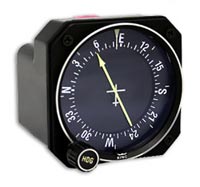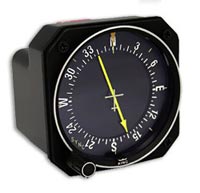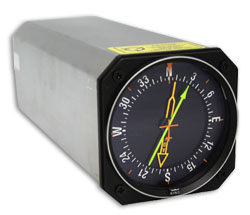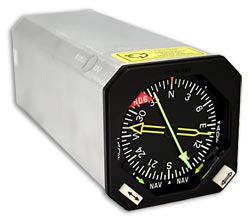 will be closed December 24th - January 2nd for the Holidays.
will be closed December 24th - January 2nd for the Holidays.
Regular business hours will resume on Monday, January 5th.
AOG Services are available.
| Part #: | 622-0555-007 |
|---|---|
| Model: | 332C-10 |
| Desc: | RMI |
| OEM: | Collins Aerospace |
| NSN: | 5820-01-111-5097 |
|---|---|
| Sched-B: | 8526910010 |
| ECCN: | 7A994 |
| Cage Code: | 13499 |
 Select part number above to view pricing and availability.
Select part number above to view pricing and availability.
| Price | Condition | Availability | Stock Info | |
|---|---|---|---|---|
| Price | Cond. | Avail. | Stock Info | |
| REQUEST | OH OUTRIGHT | REQUEST LEAD TIME |
|
| Price | Condition | Availability | Stock Info | |
|---|---|---|---|---|
| Price | Cond. | Avail. | Stock Info | |
| REQUEST | RFQ | REQUEST LEAD TIME |
|
| Price | Condition | Availability | Stock Info | |
|---|---|---|---|---|
| Price | Cond. | Avail. | Stock Info | |
| REQUEST | OH OUTRIGHT | REQUEST LEAD TIME |
|
|
| REQUEST | OH EXCHANGE | REQUEST LEAD TIME |
|
| Price | Condition | Availability | Stock Info | |
|---|---|---|---|---|
| Price | Cond. | Avail. | Stock Info | |
| REQUEST | OH OUTRIGHT | REQUEST LEAD TIME |
|
|
| REQUEST | OH EXCHANGE | REQUEST LEAD TIME |
|
| Price | Condition | Availability | Stock Info | |
|---|---|---|---|---|
| Price | Cond. | Avail. | Stock Info | |
| REQUEST | RFQ | REQUEST LEAD TIME |
|
| Price | Condition | Availability | Stock Info | |
|---|---|---|---|---|
| Price | Cond. | Avail. | Stock Info | |
| REQUEST | OH OUTRIGHT | IN WORK |
|

FEATURES
SPECIFICATIONS
| FAA TSO: | C6c | Environmental: | RTCA DO-138 |
| Dimensions: | 3.21"H x 3.38"W x 8.0"L | Altitude: | 15000 ft max |
| Pointer 1 Color: | Day-Glo yellow | Pointer 2 Color: | Day-Glo green |
| HDG flag Color: | Rocket red | Lubber line Color: | arc yellow |
| Numerals Color: | White | Background Color: | Black |
| Temperature: | -15 to 55C (operation) |
| Part Number: | Description: |
|---|---|
| 622-0555-001 | 28 volt Blue-white lighting, Gray standard bezel |
| 622-0555-002 | 5 volt Blue-white lighting, Gray standard bezel |
| 622-0555-003 | 28 volt Blue-white lighting, Black low profile bezel |
| 622-0555-004 | 5 volt Blue-white lighting, Black low profile bezel |
| 622-0555-005 | 28 volt Blue-white lighting, Gray low profile bezel |
| 622-0555-006 | 5 volt Blue-white lighting, Gray low profile bezel |
| 622-0555-007 | 5 volt Unfiltered white lighting, Black low profile bezel |
| 622-0555-008 | 5 volt Blue-white lighting, Gray special low profile bezel |
| 622-0555-010 | 28 volt Blue-white lighting, Gray low profile bezel (DF mode ref), military |
| 622-0555-011 | 5 volt Blue-white lighting, Gray special low profile bezel |
| Price | Condition | Status |
|---|---|---|
| REQUEST | OH OUTRIGHT | IN WORK |
NSN: 5820-01-111-5097
| Price | Condition | Status |
|---|---|---|
| REQUEST | OH OUTRIGHT | REQUEST LEAD TIME |
| Price | Condition | Status |
|---|---|---|
| RFQ | RFQ | RFQ |
| Price | Condition | Status |
|---|---|---|
| REQUEST | OH OUTRIGHT | REQUEST LEAD TIME |
| REQUEST | OH EXCHANGE | REQUEST LEAD TIME |
| Price | Condition | Status |
|---|---|---|
| REQUEST | OH OUTRIGHT | REQUEST LEAD TIME |
| REQUEST | OH EXCHANGE | REQUEST LEAD TIME |
| Price | Condition | Status |
|---|---|---|
| RFQ | RFQ | RFQ |
Click on a question below to see the answer. If you have a question about this model that is not answered below, please contact questions@seaerospace.com
In relation to NE (New) parts, many OEMs change their prices and availability without any notice to dealers or the industry. Therefore, through the REQUEST or RFQ indication, we ask that customers contact us for the most accurate price and availability.
In relation to SV & OH parts, the used parts aftermarket in the aviation industry is not an infinite supply. It is a dynamic, constantly changing market that is significantly affected by and susceptible to highs and lows in supply and demand. Therefore, although we attempt to, at times, we are unable to predict the exact moment when an item may be available. Once again, through the REQUEST or RFQ indication on our website, we ask that customers contact us for the most current and accurate price and availability.
The use of a Radio Magnetic Indicator in an aircraft offers several benefits that improve navigation situational awareness and pilot workload.
A very basic ADF indicator without a moveable compass card simply points to a selected beacon. The pilot must calculate the bearing needed based on the aircraft's current heading. Most if not all ADF indicators without a knob to turn the compass ca rd are very old and obsolete.
Most ADF indicators include a knob to turn the present heading so that the bearing to the beacon can be read against the compass card.


The RMI provides all of the ADF indicator functions with automatic rotation of the compass card via the aircraft's compass system. Therefore, whenever the aircraft turns then the compass card will turn.
An RMI always automatically points to the bearing to a beacon. This is a more logical form of indication even over VOR type of navigation since there is no OBS, To-From, radials, etc.

More advanced RMI indicators offer even more flexibility and features by offering dual needle for ADF and VOR bearing and multiple ADF/VOR navigation.

Negotiating the exchange price of a unit only limits the allowable repair cap for the core unit. Southeast Aerospace's exchange transactions are based on the return of economically repairable core unit. Once the core is received and evaluated, the core repair cost incurred by SEA cannot exceed 75% of the original exchange price. That is, it cannot cost SEA more than 75% of the original OH/SV exchange price collected from the customer. Therefore, when and if an SEA exchange price is discounted, there is a risk that additional charges may be assessed once the core is returned and evaluated.